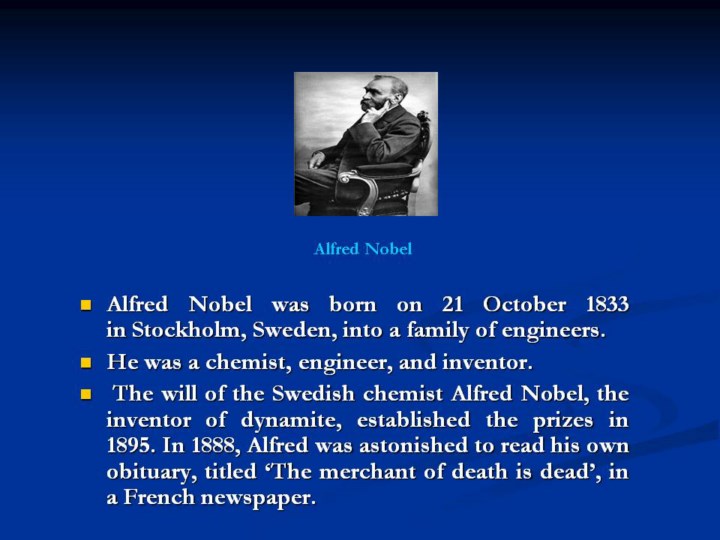| front |1 |2 |3 |4 |5 |6 |7 |8 |9 |10 |11 |12 |13 |14 |15 |16 |17 |18 |19 |20 |21 |22 |23 |24 |25 |26 |27 |28 |29 |30 |31 |32 |33 |34 |35 |36 |37 |38 |39 |40 |41 |42 |43 |44 |45 |46 |47 |48 |49 |50 |51 |52 |53 |54 |55 |56 |57 |58 |59 |60 |61 |62 |63 |64 |65 |66 |67 |68 |review |
 |
As it was Alfred's brother Ludvig who had died, the obituary was eight years premature. The article disconcerted Nobel about how he would be remembered. This inspired him to change his will. He was 63 years old.
Nobel found that when nitroglycerine was incorporated in an absorbent
inert substance like
kieselguhr
(diatomaceous earth) it became safer and more convenient to handle, and
this mixture he patented in 1867 as 'dynamite'.
Nobel held 355 different patents, dynamite being the most famous. In his
last will, he used his enormous fortune to institute the Nobel Prizes.
The synthetic element nobelium was named after him. His name also
survives in modern-day companies such as Dynamit Nobel and Akzo Nobel,
which are descendents of the companies Nobel himself established.
The foundations of the Nobel Prize were laid in 1895 when Alfred Nobel wrote his last will, leaving much of his wealth for its establishment. Since 1901, the prize has honored men and women for outstanding achievements in physics, chemistry, medicine, literature and for work in peace.
Alfred Nobel died in his villa in San Remo, Italy on 10 December 1896 from a cerebral haemorrhage.
The awards are presented in Stockholm in an annual ceremony on December 10, the anniversary of Nobel's death.
Each recipient receives a medal, a diploma and a monetary award that has varied throughout the years. |